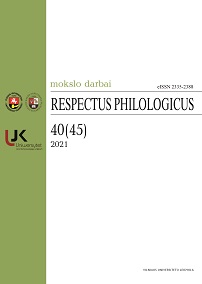The Concept of “Thrownness” in Algis Budrys’s Short Story “Wall of Crystal, Eye of Night”
The Concept of “Thrownness” in Algis Budrys’s Short Story “Wall of Crystal, Eye of Night”
Author(s): Svetozar PoštićSubject(s): Lithuanian Literature, German Idealism, Phenomenology, Theory of Literature, Stylistics
Published by: Vilniaus Universiteto Leidykla
Keywords: Algis Budrys; Wall of Crystal; thrownness; stylistic devices;
Summary/Abstract: This paper analyses the concept of thrownness and the related notions of immediacy and actuality in a 1961 short science fiction story “Wall of Crystal, Eye of Night” by Algis Budrys. It first defines the concept of thrownness (Geworfenheit), created and coined by the German philosopher Martin Heidegger in his classic book Being and Time, and it explains how this notion can be employed in literary analysis in general and applied to this work in particular. The article then analyses how certain stylistic devices in the short story, namely similes, change of pace and the presentation of an inner conflict in the main character, contribute to the feeling of authenticity. In other words, it attempts to exhibit the means used in a prose work to make it seem more realistic and immediate. Finally, the work also argues that science fiction is in many ways more real than other fictional works. Although it belongs to the genre that has traditionally been denied serious literary merit, the novel view and interpretation of this story aims to disclose new horizons of artistic expression that illuminate human mental and physical frailty and stimulate a valuable inquiry into the meaning of life.
Journal: Respectus Philologicus
- Issue Year: 2021
- Issue No: 40 (45)
- Page Range: 111-121
- Page Count: 11
- Language: English

